See Page 1 |
2 |
3 |
4 | of the March 2023 homepage archives.
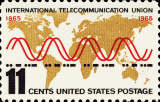 It is kind of hard to believe that even
by 1966, when the
International Telecommunications Union (ITU) met in Oslo, Norway, that the world
had not yet agreed in a common transmission standard for color television. In January
of 1967, Radio−Electronics magazine editor Thomas Hasket interviewed two major players
in the industry, George Brown of Radio Corporation of America (RCA), and Frederick
M. Remley, Jr. of Society of Motion Picture and Television Engineers (SMPTE), regarding
the stalemate that was unarguably hampering the ramping up of color television set
production. Consumers were pining for them, but companies hesitated to invest engineering
and manufacturing resources when they couldn't be sure it would not be thwarted
by a change in the modulation scheme. A battle was being waged between the U.S.
NTSC standard and the European PAL system (and SÉCAM to a lesser sense). Both had
strengths and weaknesses, but history has shown, NTSC ultimately won. Possibly due
to the impasse, color TV sales in America did not surpass B&W sales until the early
1970s. It is kind of hard to believe that even
by 1966, when the
International Telecommunications Union (ITU) met in Oslo, Norway, that the world
had not yet agreed in a common transmission standard for color television. In January
of 1967, Radio−Electronics magazine editor Thomas Hasket interviewed two major players
in the industry, George Brown of Radio Corporation of America (RCA), and Frederick
M. Remley, Jr. of Society of Motion Picture and Television Engineers (SMPTE), regarding
the stalemate that was unarguably hampering the ramping up of color television set
production. Consumers were pining for them, but companies hesitated to invest engineering
and manufacturing resources when they couldn't be sure it would not be thwarted
by a change in the modulation scheme. A battle was being waged between the U.S.
NTSC standard and the European PAL system (and SÉCAM to a lesser sense). Both had
strengths and weaknesses, but history has shown, NTSC ultimately won. Possibly due
to the impasse, color TV sales in America did not surpass B&W sales until the early
1970s.
Tuesday the 21st
 Upsetters of apple carts, rockers of boats,
makers of waves, creators of stirs. All idiomatically describe actions of those
who commit the transgression of challenging accepted norms. There is always someone
claiming to have discovered the "truth" about one subject or another. In the world
of technology, most often the object of contestation is which person was the "first"
to have discovered, written, or performed something. Here in this 1960 issue of
Radio−Electronics magazine, Mr. Leslie asserts that Thomas Alva Edison
actually made the world's first radio broadcast, not Guglielmo Marconi. For some
reason the image of Edison's "Means
for Transmitting Signals Electrically" patent omitted the ships at sea overtop
of the antenna structures, which seem to me to be critical in portraying the "wireless"
nature of the invention. His creative "spark" was motivated by observation of a
powerful spark and noting, "seemed so strong that it struck us forcibly there might
be something more than induction." Edward H. Loftin claims the credit goes to Lt.-Commander
Edward H. Loftin, U.S. Navy... Upsetters of apple carts, rockers of boats,
makers of waves, creators of stirs. All idiomatically describe actions of those
who commit the transgression of challenging accepted norms. There is always someone
claiming to have discovered the "truth" about one subject or another. In the world
of technology, most often the object of contestation is which person was the "first"
to have discovered, written, or performed something. Here in this 1960 issue of
Radio−Electronics magazine, Mr. Leslie asserts that Thomas Alva Edison
actually made the world's first radio broadcast, not Guglielmo Marconi. For some
reason the image of Edison's "Means
for Transmitting Signals Electrically" patent omitted the ships at sea overtop
of the antenna structures, which seem to me to be critical in portraying the "wireless"
nature of the invention. His creative "spark" was motivated by observation of a
powerful spark and noting, "seemed so strong that it struck us forcibly there might
be something more than induction." Edward H. Loftin claims the credit goes to Lt.-Commander
Edward H. Loftin, U.S. Navy...
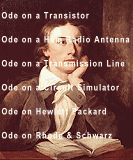 OpenAI (ChatGPT) founder Greg Brockman,
recently produced a video introducing some of the improvements and new features
of GPT−4 (current public version is GPT−3.5). One thing he did was ask the AI machine
for a single sentence summary using only words beginning with the letter "g." GPT−3.5
failed miserably, but GPT−4 succeeded. It even did a sentence using only words beginning
with the letter "q." He also had GPT−4 create a poem about the tax preparation capability
of ChatGPT (itself an impressive act). A few of the vintage issues of Popular
Electronics and the ARRL's monthly QST magazine contained
electronics-related poems submitted by readers (see "Unpopular Radio," and "Pre-Radio,"
et al). Some are pretty clever. It takes some cogitation, skill, and creative ability
to come up with a rhyming poem on a technical subject like amateur radio. Since
I am in insufficient possession of the aforementioned qualities, I decided to task
ChatGPT to create a few topical poems for me. Is this amazing, or what? Be sure
to see "Ode on Rhode & Schwarz" and... OpenAI (ChatGPT) founder Greg Brockman,
recently produced a video introducing some of the improvements and new features
of GPT−4 (current public version is GPT−3.5). One thing he did was ask the AI machine
for a single sentence summary using only words beginning with the letter "g." GPT−3.5
failed miserably, but GPT−4 succeeded. It even did a sentence using only words beginning
with the letter "q." He also had GPT−4 create a poem about the tax preparation capability
of ChatGPT (itself an impressive act). A few of the vintage issues of Popular
Electronics and the ARRL's monthly QST magazine contained
electronics-related poems submitted by readers (see "Unpopular Radio," and "Pre-Radio,"
et al). Some are pretty clever. It takes some cogitation, skill, and creative ability
to come up with a rhyming poem on a technical subject like amateur radio. Since
I am in insufficient possession of the aforementioned qualities, I decided to task
ChatGPT to create a few topical poems for me. Is this amazing, or what? Be sure
to see "Ode on Rhode & Schwarz" and...
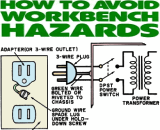 Common sense never goes out of style, especially
as it pertains to
safety in the presence of electricity. Most people who have worked in the electrical
/ electronics realm for a while are aware that lethal electrocution can occur with
currents as low as 100 mA when it passes through the heart. Lower values cause
progressively less profound maladies, but in practice any level of current great
enough to be felt is not a good thing. I have written before about having received
a few pretty scary shocks when working on high voltage equipment and many lesser
jolts throughout my 50± years of exposure. Other than observing my father's being
leery of using of anything with an electric cord attached to it, my first formal
instruction about electrical safety was in my vocational classes in high school.
Instructor Russ Lorenzen taught us to keep one hand in our pockets when working
on live circuits, which of course was only to be done under the rare circumstance
when it is not possible to first turn power off. In practice that often meant when
doing so would be more inconvenient than the calculated risk of electrocution. Seriously,
though... Common sense never goes out of style, especially
as it pertains to
safety in the presence of electricity. Most people who have worked in the electrical
/ electronics realm for a while are aware that lethal electrocution can occur with
currents as low as 100 mA when it passes through the heart. Lower values cause
progressively less profound maladies, but in practice any level of current great
enough to be felt is not a good thing. I have written before about having received
a few pretty scary shocks when working on high voltage equipment and many lesser
jolts throughout my 50± years of exposure. Other than observing my father's being
leery of using of anything with an electric cord attached to it, my first formal
instruction about electrical safety was in my vocational classes in high school.
Instructor Russ Lorenzen taught us to keep one hand in our pockets when working
on live circuits, which of course was only to be done under the rare circumstance
when it is not possible to first turn power off. In practice that often meant when
doing so would be more inconvenient than the calculated risk of electrocution. Seriously,
though...
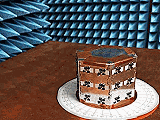 "When you tap on your phone screen to check
something on the internet, you make use of wireless communications technology. With
the advent of 5G networks, this technology has made our lives easier than we could
imagine. As we progress towards 6G communication, the use of IoT devices to monitor
and perform tasks is becoming inevitable. As a result, there is a growing demand
for the services provided by such devices. However, the frequency resources accessible
to the IoT devices remain limited. Consequently, there has been a lot of research
focused on using various modulation schemes to fit in more data without causing
interference. Yet, however, they have ignored one important aspect of wireless communication:
conventional antennas respond to signals at the same frequency in the same manner.
However, if one were to modulate the antenna performance for a fixed frequency based
on other aspects of the signal waveform, like its pulse width, it would add a whole
new degree of freedom that can be exploited to transfer data efficiently... the
researchers put forth a new system that uses
'metasurfaces' to create waveform-based selectivity in antennas..." "When you tap on your phone screen to check
something on the internet, you make use of wireless communications technology. With
the advent of 5G networks, this technology has made our lives easier than we could
imagine. As we progress towards 6G communication, the use of IoT devices to monitor
and perform tasks is becoming inevitable. As a result, there is a growing demand
for the services provided by such devices. However, the frequency resources accessible
to the IoT devices remain limited. Consequently, there has been a lot of research
focused on using various modulation schemes to fit in more data without causing
interference. Yet, however, they have ignored one important aspect of wireless communication:
conventional antennas respond to signals at the same frequency in the same manner.
However, if one were to modulate the antenna performance for a fixed frequency based
on other aspects of the signal waveform, like its pulse width, it would add a whole
new degree of freedom that can be exploited to transfer data efficiently... the
researchers put forth a new system that uses
'metasurfaces' to create waveform-based selectivity in antennas..."
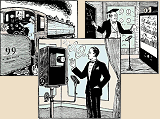 December is traditionally the issue for
magazines to sum up accomplishments of the ending year and make
predictions for the next year. Radio-Craft magazine was no exception,
but in 1936 they went ten steps farther and prognosticated a decade into the future
- all the way to 1946! It is actually a tongue-in-cheek reprint from Pathe News
magazine. However, note the drawing of 'professor teaches 2 million pupils,' where
he is instructing via television and the railroad company boss checking in on the
conductors en route via wireless teleconferencing. It might have seemed like a pipe
dream in 1936, but now it is commonplace. Not only do we now have live classroom
broadcasts, but millions of YouTube videos of instruction for performing just about
every task and teaching every subject imaginable... December is traditionally the issue for
magazines to sum up accomplishments of the ending year and make
predictions for the next year. Radio-Craft magazine was no exception,
but in 1936 they went ten steps farther and prognosticated a decade into the future
- all the way to 1946! It is actually a tongue-in-cheek reprint from Pathe News
magazine. However, note the drawing of 'professor teaches 2 million pupils,' where
he is instructing via television and the railroad company boss checking in on the
conductors en route via wireless teleconferencing. It might have seemed like a pipe
dream in 1936, but now it is commonplace. Not only do we now have live classroom
broadcasts, but millions of YouTube videos of instruction for performing just about
every task and teaching every subject imaginable...
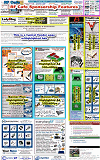 New Scheme rotates
all Banners in all locations on the page! RF Cafe typically receives 8,000-15,000
website visits each weekday.
RF Cafe is a favorite
of engineers, technicians, hobbyists, and students all over the world. With more
than 17,000 pages in the Google search index, RF Cafe returns in favorable
positions on many types of key searches, both for text and images. New content is
added on a daily basis, which keeps the major search engines interested enough to
spider it multiple times each day. Items added on the homepage often can be found
in a Google search within a few hours of being posted. If you need your company news to be seen, RF Cafe is the
place to be. New Scheme rotates
all Banners in all locations on the page! RF Cafe typically receives 8,000-15,000
website visits each weekday.
RF Cafe is a favorite
of engineers, technicians, hobbyists, and students all over the world. With more
than 17,000 pages in the Google search index, RF Cafe returns in favorable
positions on many types of key searches, both for text and images. New content is
added on a daily basis, which keeps the major search engines interested enough to
spider it multiple times each day. Items added on the homepage often can be found
in a Google search within a few hours of being posted. If you need your company news to be seen, RF Cafe is the
place to be.
 Lotus Communication Systems began in 2009,
setting up CNC machine shop and RF/microwave assembling and testing lab in Middlesex
Country, Massachusetts. Lotus is committed to highest quality and innovative products.
Each RF/microwave module meets
exceedingly high standards of quality, performance and excellent value, and are
100% MADE IN USA. Lotus' RF/microwave products cover frequency band up to 67 GHz.
Lotus also offers an COTS shield enclosures for RF/microwave prototyping and production.
All products are custom designed. We will find a solution and save your time and
cost. Lotus has multiple 4 axis CNC machines and LPKF circuit plotters. In stock,
1-day free shipping. Lotus Communication Systems began in 2009,
setting up CNC machine shop and RF/microwave assembling and testing lab in Middlesex
Country, Massachusetts. Lotus is committed to highest quality and innovative products.
Each RF/microwave module meets
exceedingly high standards of quality, performance and excellent value, and are
100% MADE IN USA. Lotus' RF/microwave products cover frequency band up to 67 GHz.
Lotus also offers an COTS shield enclosures for RF/microwave prototyping and production.
All products are custom designed. We will find a solution and save your time and
cost. Lotus has multiple 4 axis CNC machines and LPKF circuit plotters. In stock,
1-day free shipping.
Monday the 20th
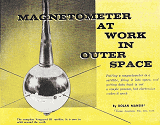 When I saw the photo of the
Vanguard III satellite in Figure 5 of this 1960 Radio−Electronics
magazine article, my thought was how much it looks like the Russian Sputnik satellite
with its spherical body and the antennas from four sides pointed upward. In fact,
the antennas were spring loaded to stick out perpendicular to the body after deployment,
as shown in Figure 1. The thick "horn" on the top is the magnetometer probe.
As can be seen in the schematic of the magnetometer circuit, solid state device
dominated the electronics, although almost certainly the transmitter used at least
one vacuum tube as a power amplifier. It can be argued that the "Space Age" would
not have been possible without solid state electronics because of size, weight,
power consumption, and reliability improvements over tube technology. These satellites
immediately followed the International Geophysical Year (IGY) activities conducted
on atmospheric parameters... When I saw the photo of the
Vanguard III satellite in Figure 5 of this 1960 Radio−Electronics
magazine article, my thought was how much it looks like the Russian Sputnik satellite
with its spherical body and the antennas from four sides pointed upward. In fact,
the antennas were spring loaded to stick out perpendicular to the body after deployment,
as shown in Figure 1. The thick "horn" on the top is the magnetometer probe.
As can be seen in the schematic of the magnetometer circuit, solid state device
dominated the electronics, although almost certainly the transmitter used at least
one vacuum tube as a power amplifier. It can be argued that the "Space Age" would
not have been possible without solid state electronics because of size, weight,
power consumption, and reliability improvements over tube technology. These satellites
immediately followed the International Geophysical Year (IGY) activities conducted
on atmospheric parameters...
 Triad RF Systems designs and manufactures
RF power amplifiers
and systems. Triad RF Systems comprises three partners (hence "Triad") with
over 40 years of accumulated knowledge of what is required to design, manufacture,
market, sell and service RF/Microwave amplifiers and amplifier systems. PA, LNA,
bi-directional, and frequency translating amplifiers are available, in formats including
tower mount, benchtop, rack mount, and chassis mount. "We view Triad more as a technology
partner than a vendor for our line-of-sight communications product line." Please
check to see how they can help your project. Triad RF Systems designs and manufactures
RF power amplifiers
and systems. Triad RF Systems comprises three partners (hence "Triad") with
over 40 years of accumulated knowledge of what is required to design, manufacture,
market, sell and service RF/Microwave amplifiers and amplifier systems. PA, LNA,
bi-directional, and frequency translating amplifiers are available, in formats including
tower mount, benchtop, rack mount, and chassis mount. "We view Triad more as a technology
partner than a vendor for our line-of-sight communications product line." Please
check to see how they can help your project.
 Elections have consequences, as the old
political says goes. If you're feeling the hurt of massive inflation over the last
two years, then you might also identify with another saying: Misery loves company.
You are not alone.
IEEE Spectrum
magazine uses data from "The Dice Tech
Salary Report 2023 Edition" to plot how while salaries have increased in dollar
numbers, the purchasing power has effectively gone down. "The numbers from job search
firms Dice and Hired have been released. These 2022 numbers have been eagerly anticipated,
given the turmoil generated by a spate of tech layoffs in the latter part of the
year, which Dice estimates at more than 140,000. The data they collect doesn’t allow
for apples-to-apples comparisons, but I've read through both reports, pulled out
data from past years to give the numbers some perspective when possible, and summarized
it in eight charts. Dice's numbers come from a survey administered to its registered
job seekers and site visitors between 16 August 2022 and 17 October 2022, for a
total of 7,098 completed surveys. Hired's analysis included data from 68,500 job
candidates and 494,000 interview requests..." Elections have consequences, as the old
political says goes. If you're feeling the hurt of massive inflation over the last
two years, then you might also identify with another saying: Misery loves company.
You are not alone.
IEEE Spectrum
magazine uses data from "The Dice Tech
Salary Report 2023 Edition" to plot how while salaries have increased in dollar
numbers, the purchasing power has effectively gone down. "The numbers from job search
firms Dice and Hired have been released. These 2022 numbers have been eagerly anticipated,
given the turmoil generated by a spate of tech layoffs in the latter part of the
year, which Dice estimates at more than 140,000. The data they collect doesn’t allow
for apples-to-apples comparisons, but I've read through both reports, pulled out
data from past years to give the numbers some perspective when possible, and summarized
it in eight charts. Dice's numbers come from a survey administered to its registered
job seekers and site visitors between 16 August 2022 and 17 October 2022, for a
total of 7,098 completed surveys. Hired's analysis included data from 68,500 job
candidates and 494,000 interview requests..."
 This "Recent Tech Headlines
Quiz" challenges your ability to recall items from the homepage "Electronics &
Tech Headlines" column for the week of March 13, 2023. Except for the questions
and answers which I modified (and added two more sets), every line of JavaScript
code for this multiple-choice quiz was generated based on a query made to the ChatGPT
engine from OpenAI. It also generated code for the PHP language, and will presumable
do so for many other computer languages. Just for the heck of it, I had ChatGPT
generate a version of the quiz code in the COBOL language. COBOL, if you are old
enough to recall, the a primary mainframe computer language before the PC era, and
was a big deal during the run-up to Y2K because legacy code could not handle the
century change. Lots of gray-haired, retired COBOL programmers made big bucks helping
coders port code to C++, Delphi... This "Recent Tech Headlines
Quiz" challenges your ability to recall items from the homepage "Electronics &
Tech Headlines" column for the week of March 13, 2023. Except for the questions
and answers which I modified (and added two more sets), every line of JavaScript
code for this multiple-choice quiz was generated based on a query made to the ChatGPT
engine from OpenAI. It also generated code for the PHP language, and will presumable
do so for many other computer languages. Just for the heck of it, I had ChatGPT
generate a version of the quiz code in the COBOL language. COBOL, if you are old
enough to recall, the a primary mainframe computer language before the PC era, and
was a big deal during the run-up to Y2K because legacy code could not handle the
century change. Lots of gray-haired, retired COBOL programmers made big bucks helping
coders port code to C++, Delphi...
 Modelithics and International Manufacturing Services
(IMS) have expanded their long term collaboration commitment for an additional
six (6) years, which includes development of simulation models for several additional
IMS device families, as well as renewing their Sponsoring Modelithics Vendor Partner
(MVP) status. Additional high frequency Modelithics Microwave Global Models™ for
multiple IMS resistor and attenuator families are planned under the extended agreement.
J.J. Silvia III, IMS Vice President, General Manager, states: "IMS is excited to
continue this partnership. Applying bench-test data to scalable models found in
their library not only provides valuable performance validation, but also benefits
our customer design speed and capabilities. High tech customers design with high
tech tools that are supported by Modelithics' software... Modelithics and International Manufacturing Services
(IMS) have expanded their long term collaboration commitment for an additional
six (6) years, which includes development of simulation models for several additional
IMS device families, as well as renewing their Sponsoring Modelithics Vendor Partner
(MVP) status. Additional high frequency Modelithics Microwave Global Models™ for
multiple IMS resistor and attenuator families are planned under the extended agreement.
J.J. Silvia III, IMS Vice President, General Manager, states: "IMS is excited to
continue this partnership. Applying bench-test data to scalable models found in
their library not only provides valuable performance validation, but also benefits
our customer design speed and capabilities. High tech customers design with high
tech tools that are supported by Modelithics' software...
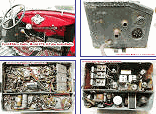 This Radio Service Data Sheet covers the
Ford-Philco model FT9, 6-tube auto-radio receiver. It appeared in a 1936 issue
of Radio−Craft magazine. Most - if not all - electronics servicemen had
subscriptions to these magazines because they were a ready source of not just these
service sheets, but because of the extensive articles offering advice on servicing
radios and televisions. In fact, many electronics manufacturers had a policy of
supplying service data only to bona fide shops. Thumbnail photos at the left came
from a Ford-Philco FT9 radio on eBay. A large list is included at the bottom of
the page of similar documents from vintage receiver schematics, troubleshooting
tips, and alignment procedures. They were originally published in magazines like
this one, Radio and Television News, Radio News, etc. I scan and
post them for the benefit of hobbyists who restore and service vintage electronics
equipment... This Radio Service Data Sheet covers the
Ford-Philco model FT9, 6-tube auto-radio receiver. It appeared in a 1936 issue
of Radio−Craft magazine. Most - if not all - electronics servicemen had
subscriptions to these magazines because they were a ready source of not just these
service sheets, but because of the extensive articles offering advice on servicing
radios and televisions. In fact, many electronics manufacturers had a policy of
supplying service data only to bona fide shops. Thumbnail photos at the left came
from a Ford-Philco FT9 radio on eBay. A large list is included at the bottom of
the page of similar documents from vintage receiver schematics, troubleshooting
tips, and alignment procedures. They were originally published in magazines like
this one, Radio and Television News, Radio News, etc. I scan and
post them for the benefit of hobbyists who restore and service vintage electronics
equipment...
 New Scheme rotates
all Banners in all locations on the page! RF Cafe typically receives 8,000-15,000
website visits each weekday.
RF Cafe is a favorite
of engineers, technicians, hobbyists, and students all over the world. With more
than 17,000 pages in the Google search index, RF Cafe returns in favorable
positions on many types of key searches, both for text and images. New content is
added on a daily basis, which keeps the major search engines interested enough to
spider it multiple times each day. Items added on the homepage often can be found
in a Google search within a few hours of being posted. If you need your company news to be seen, RF Cafe is the
place to be. New Scheme rotates
all Banners in all locations on the page! RF Cafe typically receives 8,000-15,000
website visits each weekday.
RF Cafe is a favorite
of engineers, technicians, hobbyists, and students all over the world. With more
than 17,000 pages in the Google search index, RF Cafe returns in favorable
positions on many types of key searches, both for text and images. New content is
added on a daily basis, which keeps the major search engines interested enough to
spider it multiple times each day. Items added on the homepage often can be found
in a Google search within a few hours of being posted. If you need your company news to be seen, RF Cafe is the
place to be.
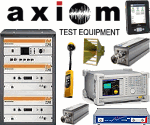 Axiom Test Equipment allows you to
rent or
buy test equipment,
repair
test equipment, or sell or trade test equipment. They are committed to providing
superior customer service and high quality electronic test equipment. Axiom offers
customers several practical, efficient, and cost effective solutions for their projects'
TE needs and is committed to providing superior customer service and high quality
electronic test equipment. For anyone seeking a way to offload surplus or obsolete
equipment, they offer a trade-in program or they will buy the equipment from you.
Some vintage items are available fully calibrated. Please check out Axiom Test Equipment
today - and don't miss the blog articles! Axiom Test Equipment allows you to
rent or
buy test equipment,
repair
test equipment, or sell or trade test equipment. They are committed to providing
superior customer service and high quality electronic test equipment. Axiom offers
customers several practical, efficient, and cost effective solutions for their projects'
TE needs and is committed to providing superior customer service and high quality
electronic test equipment. For anyone seeking a way to offload surplus or obsolete
equipment, they offer a trade-in program or they will buy the equipment from you.
Some vintage items are available fully calibrated. Please check out Axiom Test Equipment
today - and don't miss the blog articles!
Sunday the 19th
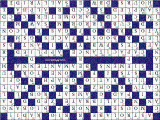 This custom RF Cafe
electronics-themed crossword puzzle for March 19th contains words and clues
which pertain strictly to the subjects of electronics, mechanics, power distribution,
engineering, science, physics, astronomy, chemistry, etc. If you do see names of
people or places, they are directly related to the aforementioned areas of study.
As always, you will find no references to numbnut movie stars or fashion designers.
Need more crossword RF Cafe puzzles? A list at the bottom of the page links to hundreds
of them dating back to the year 2000. Enjoy. This custom RF Cafe
electronics-themed crossword puzzle for March 19th contains words and clues
which pertain strictly to the subjects of electronics, mechanics, power distribution,
engineering, science, physics, astronomy, chemistry, etc. If you do see names of
people or places, they are directly related to the aforementioned areas of study.
As always, you will find no references to numbnut movie stars or fashion designers.
Need more crossword RF Cafe puzzles? A list at the bottom of the page links to hundreds
of them dating back to the year 2000. Enjoy.
 This assortment of custom-designed themes
by RF Cafe includes T-Shirts, Mouse Pads, Clocks, Tote Bags, Coffee Mugs and Steins,
Purses, Sweatshirts, and Baseball Caps. Choose from amazingly clever "We Are the World's
Matchmakers" Smith chart design or the "Engineer's Troubleshooting Flow Chart."
My "Matchmaker's" design has been ripped off by other people and used on their products,
so please be sure to purchase only official RF Cafe gear. My markup is only a paltry
50¢ per item - Cafe Press gets the rest of your purchase price. These would make
excellent gifts for husbands, wives, kids, significant others, and for handing out
at company events or as rewards for excellent service. It's a great way to help
support RF Cafe. Thanks... This assortment of custom-designed themes
by RF Cafe includes T-Shirts, Mouse Pads, Clocks, Tote Bags, Coffee Mugs and Steins,
Purses, Sweatshirts, and Baseball Caps. Choose from amazingly clever "We Are the World's
Matchmakers" Smith chart design or the "Engineer's Troubleshooting Flow Chart."
My "Matchmaker's" design has been ripped off by other people and used on their products,
so please be sure to purchase only official RF Cafe gear. My markup is only a paltry
50¢ per item - Cafe Press gets the rest of your purchase price. These would make
excellent gifts for husbands, wives, kids, significant others, and for handing out
at company events or as rewards for excellent service. It's a great way to help
support RF Cafe. Thanks...
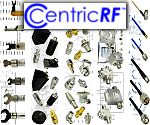 Centric RF is a company offering from stock
various RF and
Microwave coaxial components, including attenuators, adapters, cable assemblies,
terminations, power dividers, and more. We believe in offering high performance
parts from stock at a reasonable cost. Frequency ranges of 0-110 GHz at power
levels from 0.5-500 watts are available off the shelf. Order today, ship today!
Centric RF is currently looking for vendors to partner with them. Please visit Centric
RF today. Centric RF is a company offering from stock
various RF and
Microwave coaxial components, including attenuators, adapters, cable assemblies,
terminations, power dividers, and more. We believe in offering high performance
parts from stock at a reasonable cost. Frequency ranges of 0-110 GHz at power
levels from 0.5-500 watts are available off the shelf. Order today, ship today!
Centric RF is currently looking for vendors to partner with them. Please visit Centric
RF today.
Friday the 17th
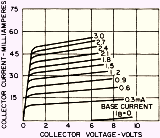 By the time this "Test
Transistors Fast" article appeared in a 1969 issue of Radio-Electronics
magazine, the use of vacuum tubes in new designs had been relegated to the domain
of hobby and specialized circuits. Very high power and frequency applications were
still waiting for semiconductors capable of servicing such equipment, but the electronics
industry, particularly the domestic consumer world, used transistors and what was
available in the form of integrated circuits. While designers had already been using
transistors for a decade or more, many of the aforementioned hobbyists and electronics
repair servicemen were still getting accustomed to the newfangled technology and
welcomed the publishing of these kinds of topics. In 1969, the only thing I knew
about transistors was that they must have somehow been associated with the "transistor
radio" I carried in my jacket pocket. It was too small to contain any of those glowing
tubes we still had in our household TV set and tabletop radios (and in the dashboard
of our family's 1960 Rambler auto for that matter), so surely there was a difference... By the time this "Test
Transistors Fast" article appeared in a 1969 issue of Radio-Electronics
magazine, the use of vacuum tubes in new designs had been relegated to the domain
of hobby and specialized circuits. Very high power and frequency applications were
still waiting for semiconductors capable of servicing such equipment, but the electronics
industry, particularly the domestic consumer world, used transistors and what was
available in the form of integrated circuits. While designers had already been using
transistors for a decade or more, many of the aforementioned hobbyists and electronics
repair servicemen were still getting accustomed to the newfangled technology and
welcomed the publishing of these kinds of topics. In 1969, the only thing I knew
about transistors was that they must have somehow been associated with the "transistor
radio" I carried in my jacket pocket. It was too small to contain any of those glowing
tubes we still had in our household TV set and tabletop radios (and in the dashboard
of our family's 1960 Rambler auto for that matter), so surely there was a difference...
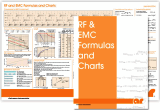 This "RF and EMC Formulas and Charts" poster by
AR RF/Microwave Instrumentation, a manufacturer of amplifiers, antennas, anechoic
chambers, and related equipment, is a great resource to have in your lab or at your
desk for a handy and quick reference for the EMC professional. This poster covers
the basics such as frequency-to-wavelengths and Ohms law relationships, Linear to
Log conversions, as well as EMC-targeted content such as radiated field strength
and antenna factor calculations. It also includes conversions for a 50 Ω environment,
common EMC equations, VSWR conversion charts, antenna equations, unit conversions,
and more. It is a great addition to any EMC lab. Other poster themes may also be
downloaded... This "RF and EMC Formulas and Charts" poster by
AR RF/Microwave Instrumentation, a manufacturer of amplifiers, antennas, anechoic
chambers, and related equipment, is a great resource to have in your lab or at your
desk for a handy and quick reference for the EMC professional. This poster covers
the basics such as frequency-to-wavelengths and Ohms law relationships, Linear to
Log conversions, as well as EMC-targeted content such as radiated field strength
and antenna factor calculations. It also includes conversions for a 50 Ω environment,
common EMC equations, VSWR conversion charts, antenna equations, unit conversions,
and more. It is a great addition to any EMC lab. Other poster themes may also be
downloaded...
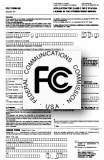 If you have
only ever known a time in the R/C era when 2.4 GHz, spread spectrum radios
were in use and not only were there no interference issues, but there were no licenses
required, either, for legal operation, then it might be hard to imagine when this
was not so. Most people in the R/C realm at least remember the 72 MHz frequency
band where each system operated on a specific center frequency, where no two systems
could be operated in the same vicinity. Before that there was the 27 MHz band,
which is where I began, more specifically on 27.195 MHz. Only five frequencies
were reserved by the FCC exclusively for radio control use. That meant never more
than five planes in the air, or even being worked on with the radio on, at a time.
The band was part of the original Citizens Band (CB) radio allocation. Commercial
CB radios were notoriously lousy at controlling bandwidth and often overlapped the
R/C bands with enough power to cause deadly (to a model) interference. My FCC operator's
permits (Class
C and Class D), obtained sometime around 1972, is long gone... If you have
only ever known a time in the R/C era when 2.4 GHz, spread spectrum radios
were in use and not only were there no interference issues, but there were no licenses
required, either, for legal operation, then it might be hard to imagine when this
was not so. Most people in the R/C realm at least remember the 72 MHz frequency
band where each system operated on a specific center frequency, where no two systems
could be operated in the same vicinity. Before that there was the 27 MHz band,
which is where I began, more specifically on 27.195 MHz. Only five frequencies
were reserved by the FCC exclusively for radio control use. That meant never more
than five planes in the air, or even being worked on with the radio on, at a time.
The band was part of the original Citizens Band (CB) radio allocation. Commercial
CB radios were notoriously lousy at controlling bandwidth and often overlapped the
R/C bands with enough power to cause deadly (to a model) interference. My FCC operator's
permits (Class
C and Class D), obtained sometime around 1972, is long gone...
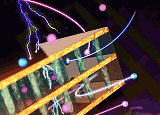 "A multidisciplinary Northwestern University
research team has created a groundbreaking transistor that is expected to be optimal
for bioelectronics that are high-performance, lightweight, and flexible. The new
electrochemical transistor is compatible with both blood and water and has the ability
to amplify significant signals, making it highly beneficial for biomedical sensing.
This transistor could make it possible to develop wearable devices that can perform
on-site signal processing right at the biology-device interface. Some potential
applications include monitoring heart rate and levels of sodium and potassium in
the blood, as well as tracking eye movements to study sleep disorders. 'All modern
electronics use transistors, which rapidly turn current on and off,' said Tobin
J. Marks, a co-corresponding author of the study. 'Here we use chemistry to enhance
the switching. Our electrochemical transistor takes performance to a totally new
level. You have all the properties of a conventional transistor but far higher transconductance..." "A multidisciplinary Northwestern University
research team has created a groundbreaking transistor that is expected to be optimal
for bioelectronics that are high-performance, lightweight, and flexible. The new
electrochemical transistor is compatible with both blood and water and has the ability
to amplify significant signals, making it highly beneficial for biomedical sensing.
This transistor could make it possible to develop wearable devices that can perform
on-site signal processing right at the biology-device interface. Some potential
applications include monitoring heart rate and levels of sodium and potassium in
the blood, as well as tracking eye movements to study sleep disorders. 'All modern
electronics use transistors, which rapidly turn current on and off,' said Tobin
J. Marks, a co-corresponding author of the study. 'Here we use chemistry to enhance
the switching. Our electrochemical transistor takes performance to a totally new
level. You have all the properties of a conventional transistor but far higher transconductance..."
 2.1 GHz (5.6-inch, or 14 cm wavelength)
radio waves were an almost totally unexplored realm in 1930, with it and higher
frequencies being the domain of theoretical research laboratories. Signal generators
capable of producing much more than a few hundred megahertz were rare even in commercial
applications. As reported here, centimeter−length electromagnetic waves were "according
to the theories of Barkhausen and Kurz, [the] result of purely electronic vibrations,
whose frequency was determined only by the operative data of the tube and was not
dependent on any internal or external oscillation circuit." A half-wave receiving
antenna picked up the transmitted signal with a simple diode detector to enable,
after a couple stages of amplification, an audible signal. These are some of the
earliest experiments at radio frequencies (RF) with parabolic metallic reflectors
and polarization with a diffraction grid that could be rotated to set the polarization
direction... 2.1 GHz (5.6-inch, or 14 cm wavelength)
radio waves were an almost totally unexplored realm in 1930, with it and higher
frequencies being the domain of theoretical research laboratories. Signal generators
capable of producing much more than a few hundred megahertz were rare even in commercial
applications. As reported here, centimeter−length electromagnetic waves were "according
to the theories of Barkhausen and Kurz, [the] result of purely electronic vibrations,
whose frequency was determined only by the operative data of the tube and was not
dependent on any internal or external oscillation circuit." A half-wave receiving
antenna picked up the transmitted signal with a simple diode detector to enable,
after a couple stages of amplification, an audible signal. These are some of the
earliest experiments at radio frequencies (RF) with parabolic metallic reflectors
and polarization with a diffraction grid that could be rotated to set the polarization
direction...
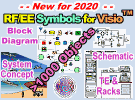 With more than 1000
custom-built symbols, this has got to be the most comprehensive set of
Visio Symbols available for RF, analog, and digital system and schematic
drawings! Every object has been built to fit proportionally on the provided
A-, B- and C-size drawing page templates (or can use your own). Symbols are provided
for equipment racks and test equipment, system block diagrams, conceptual drawings,
and schematics. Unlike previous versions, these are NOT Stencils, but instead are
all contained on tabbed pages within a single Visio document. That puts everything
in front of you in its full glory. Just copy and paste what you need on your drawing.
The file format is XML so everything plays nicely with Visio 2013 and later... With more than 1000
custom-built symbols, this has got to be the most comprehensive set of
Visio Symbols available for RF, analog, and digital system and schematic
drawings! Every object has been built to fit proportionally on the provided
A-, B- and C-size drawing page templates (or can use your own). Symbols are provided
for equipment racks and test equipment, system block diagrams, conceptual drawings,
and schematics. Unlike previous versions, these are NOT Stencils, but instead are
all contained on tabbed pages within a single Visio document. That puts everything
in front of you in its full glory. Just copy and paste what you need on your drawing.
The file format is XML so everything plays nicely with Visio 2013 and later...
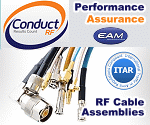 ConductRF is continually innovating and
developing new and improved solutions for RF Interconnect needs. See the latest
TESTeCON RF Test
Cables for labs. ConductRF makes production and test coax cable assemblies for
amplitude and phased matched VNA applications as well as standard & precision
RF connectors. Over 1,000 solutions for low PIM in-building to choose from in the
iBwave component library. They also provide custom coax solutions for applications
where some standard just won't do. A partnership with Newark assures fast, reliable
access. Please visit ConductRF today to see how they can help your project! ConductRF is continually innovating and
developing new and improved solutions for RF Interconnect needs. See the latest
TESTeCON RF Test
Cables for labs. ConductRF makes production and test coax cable assemblies for
amplitude and phased matched VNA applications as well as standard & precision
RF connectors. Over 1,000 solutions for low PIM in-building to choose from in the
iBwave component library. They also provide custom coax solutions for applications
where some standard just won't do. A partnership with Newark assures fast, reliable
access. Please visit ConductRF today to see how they can help your project!
Thursday the 16th
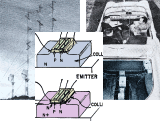 Long distance communications via satellite
were a few years off when
Pacific Scatter Communications System (PSCS) was established as a network of
microwave radio relays that spanned the Pacific Ocean during the Cold War era. It
was established by the U.S. in the late 1950s as a means of maintaining secure communications
with its military and diplomatic installations in Asia, particularly in Japan and
South Korea. PSCS consisted of a series of shortwave and microwave relay stations
located on islands throughout the Pacific, including Hawaii, Guam, Saipan, Okinawa,
and, as reported in this 1960 issue of Radio−Electronics magazine, Wake
Island. The system was designed to be highly resilient, with redundant communication
paths and backup power supplies to ensure that communication could be maintained
even in the event of a nuclear attack. It played a critical role in supporting military
operations during the Vietnam War and in maintaining diplomatic relations with allies
in Asia. The PSCS was eventually superseded by more advanced satellite communication
systems in the 1980s... Long distance communications via satellite
were a few years off when
Pacific Scatter Communications System (PSCS) was established as a network of
microwave radio relays that spanned the Pacific Ocean during the Cold War era. It
was established by the U.S. in the late 1950s as a means of maintaining secure communications
with its military and diplomatic installations in Asia, particularly in Japan and
South Korea. PSCS consisted of a series of shortwave and microwave relay stations
located on islands throughout the Pacific, including Hawaii, Guam, Saipan, Okinawa,
and, as reported in this 1960 issue of Radio−Electronics magazine, Wake
Island. The system was designed to be highly resilient, with redundant communication
paths and backup power supplies to ensure that communication could be maintained
even in the event of a nuclear attack. It played a critical role in supporting military
operations during the Vietnam War and in maintaining diplomatic relations with allies
in Asia. The PSCS was eventually superseded by more advanced satellite communication
systems in the 1980s...
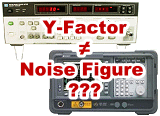 Website visitor Jared Finan contacted me
a few days ago to ask whether I had any idea why noise figure and
Y−factor measurements made with his HP/Agilent/Keysight 8975A Noise Figure Meter
were not in agreement. The same measurements made with his HP/Agilent/Keysight 8970A
- a much older piece of equipment - agreed very well. My suggestion turned out to
not be the answer. Jared wrote back later saying he found the cause of the problem
- a real exercise in troubleshooting! He gave his permission to post our dialog
here so in case someone else might have been plagued with a similar issue. There
are several methods for measuring noise figure, including the Y-factor method, the
cold source method, and the hot/cold load method. The Y-factor method is the most
widely used technique for noise figure measurement... Website visitor Jared Finan contacted me
a few days ago to ask whether I had any idea why noise figure and
Y−factor measurements made with his HP/Agilent/Keysight 8975A Noise Figure Meter
were not in agreement. The same measurements made with his HP/Agilent/Keysight 8970A
- a much older piece of equipment - agreed very well. My suggestion turned out to
not be the answer. Jared wrote back later saying he found the cause of the problem
- a real exercise in troubleshooting! He gave his permission to post our dialog
here so in case someone else might have been plagued with a similar issue. There
are several methods for measuring noise figure, including the Y-factor method, the
cold source method, and the hot/cold load method. The Y-factor method is the most
widely used technique for noise figure measurement...
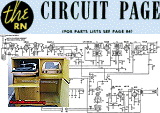 This "drive-by" schematic and parts list
for the
Admiral Model 7C64 vacuum tube console radio and phonograph appeared in the
February 1948 issue of Radio News magazine. I refer to it as "drive-by"
because there was no description or maintenance verbiage provided. You might not
expect from the relatively simple circuit that the entire Model 7C64 was mounted
in a multi-sectioned wooden cabinet that included a phonograph. The thumbnail at
the left is from the RadioMuseum.org website - a great source for research on vintage
vacuum tube radios. Admiral Radio is a brand of electronic products that was founded
in Chicago in 1924. The company started out as a manufacturer of phonographs and
radios. In 1971, Admiral Radio was acquired by Panasonic. This "drive-by" schematic and parts list
for the
Admiral Model 7C64 vacuum tube console radio and phonograph appeared in the
February 1948 issue of Radio News magazine. I refer to it as "drive-by"
because there was no description or maintenance verbiage provided. You might not
expect from the relatively simple circuit that the entire Model 7C64 was mounted
in a multi-sectioned wooden cabinet that included a phonograph. The thumbnail at
the left is from the RadioMuseum.org website - a great source for research on vintage
vacuum tube radios. Admiral Radio is a brand of electronic products that was founded
in Chicago in 1924. The company started out as a manufacturer of phonographs and
radios. In 1971, Admiral Radio was acquired by Panasonic.
 "Researcher Kaushik Sengupta is working
to expand the capabilities of sophisticated antenna arrays paired with high-frequency
wireless chips in his lab at Princeton. Sophisticated antenna arrays paired with
high-frequency wireless chips act like superpowers for modern electronics, boosting
everything from sensing to security to data processing. In recent years, Sengupta's
lab has designed antenna arrays that help engineers make strides toward peering
through matter, boosting communications in canyons of skyscrapers, putting a medical
lab on a smartphone, and encrypting critical data with electromagnetic waves instead
of software. In a new article in Advanced Science, Sengupta's research team presented
a new type of antenna array based on the paper-folding art of origami. The
shape-shifting array, designed like a folded paper box called a waterbomb, allows
engineers to create a reconfigurable and adaptable radar imaging surface..." "Researcher Kaushik Sengupta is working
to expand the capabilities of sophisticated antenna arrays paired with high-frequency
wireless chips in his lab at Princeton. Sophisticated antenna arrays paired with
high-frequency wireless chips act like superpowers for modern electronics, boosting
everything from sensing to security to data processing. In recent years, Sengupta's
lab has designed antenna arrays that help engineers make strides toward peering
through matter, boosting communications in canyons of skyscrapers, putting a medical
lab on a smartphone, and encrypting critical data with electromagnetic waves instead
of software. In a new article in Advanced Science, Sengupta's research team presented
a new type of antenna array based on the paper-folding art of origami. The
shape-shifting array, designed like a folded paper box called a waterbomb, allows
engineers to create a reconfigurable and adaptable radar imaging surface..."
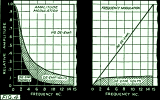 This is the second and final installment
of an article on the topic of
frequency modulation (FM) that began with Part 1 in the July 1941 edition
of Radio-Craft magazine. Author Raymond Guy, a radio facilities engineer at the
National Broadcasting Company (NBC), covers all the fundamentals of FM (a relatively
new concept at the time, invented by Major Edwin Armstrong) not just from a functional
circuits perspective but also pointing out a broadcaster's concern for channel spacing
and broadcasting ranges. Transmitter pre-emphasis, receiver de-emphasis, noise thresholds,
and adjacent channel and co-channel broadcasting strategies are discussed here... This is the second and final installment
of an article on the topic of
frequency modulation (FM) that began with Part 1 in the July 1941 edition
of Radio-Craft magazine. Author Raymond Guy, a radio facilities engineer at the
National Broadcasting Company (NBC), covers all the fundamentals of FM (a relatively
new concept at the time, invented by Major Edwin Armstrong) not just from a functional
circuits perspective but also pointing out a broadcaster's concern for channel spacing
and broadcasting ranges. Transmitter pre-emphasis, receiver de-emphasis, noise thresholds,
and adjacent channel and co-channel broadcasting strategies are discussed here...
/jobs.htm"> RF
Cafe's raison d'être is and always has been to provide useful, quality content for
engineers, technicians, engineering managers, students, and hobbyists. Part of that
mission is offering to post applicable /jobs.htm">job openings. HR department employees and/or managers of hiring
companies are welcome to submit opportunities for posting at no charge. 3rd party
recruiters and temp agencies are not included so as to assure a high quality of
listings. Please read through the easy procedure to benefit from RF Cafe's high
quality visitors... RF
Cafe's raison d'être is and always has been to provide useful, quality content for
engineers, technicians, engineering managers, students, and hobbyists. Part of that
mission is offering to post applicable /jobs.htm">job openings. HR department employees and/or managers of hiring
companies are welcome to submit opportunities for posting at no charge. 3rd party
recruiters and temp agencies are not included so as to assure a high quality of
listings. Please read through the easy procedure to benefit from RF Cafe's high
quality visitors...
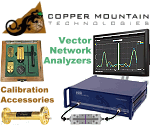 Copper Mountain Technologies develops innovative
and robust RF test and measurement solutions for engineers all over the world. Copper
Mountain's extensive line of unique form factor
Vector
Network Analyzers include an RF measurement module and a software application
which runs on any Windows PC, laptop or tablet, connecting to the measurement hardware
via USB interface. The result is a lower cost, faster, more effective test process
that fits into the modern workspace in lab, production, field and secure testing
environments. 50 Ω and 75 Ω models are available, along with
a full line of precision calibration and connector adaptors. Copper Mountain Technologies develops innovative
and robust RF test and measurement solutions for engineers all over the world. Copper
Mountain's extensive line of unique form factor
Vector
Network Analyzers include an RF measurement module and a software application
which runs on any Windows PC, laptop or tablet, connecting to the measurement hardware
via USB interface. The result is a lower cost, faster, more effective test process
that fits into the modern workspace in lab, production, field and secure testing
environments. 50 Ω and 75 Ω models are available, along with
a full line of precision calibration and connector adaptors.
Wednesday the 15th
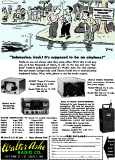 The
Walter Ashe Radio Company, featured in this 1955 issue of Radio & Television
News magazine, was a British radio manufacturer that operated from the 1920s
to the 1950s. The company was founded by Walter Ashe, who was an engineer and inventor.
In the early days, the company produced crystal radios, which were simple radios
that used a piece of crystal to detect radio waves. However, the company quickly
expanded its product range to include valve radios, which were more advanced and
offered better sound quality. During World War II, the company produced radios for
the British armed forces, including the famous "Gibson Girl" portable radio, which
was used by soldiers in the field. After the war, the company continued to produce
radios for the civilian market, including the popular "Waverley" series of radios.
In the 1950s, the company began to face increasing competition from foreign manufacturers,
and it struggled to keep up with the rapidly changing technology in the radio industry... The
Walter Ashe Radio Company, featured in this 1955 issue of Radio & Television
News magazine, was a British radio manufacturer that operated from the 1920s
to the 1950s. The company was founded by Walter Ashe, who was an engineer and inventor.
In the early days, the company produced crystal radios, which were simple radios
that used a piece of crystal to detect radio waves. However, the company quickly
expanded its product range to include valve radios, which were more advanced and
offered better sound quality. During World War II, the company produced radios for
the British armed forces, including the famous "Gibson Girl" portable radio, which
was used by soldiers in the field. After the war, the company continued to produce
radios for the civilian market, including the popular "Waverley" series of radios.
In the 1950s, the company began to face increasing competition from foreign manufacturers,
and it struggled to keep up with the rapidly changing technology in the radio industry...
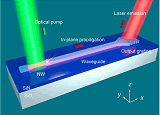 "Northwestern Polytechnical University in
China and Australian National University report on progress in integrating on-chip
nanowire (NW) laser sources in passive photonic integrated circuits (PICs).
The researchers implemented a straightforward strategy to embed the NWs in a waveguide.
First, indium phosphide (InP) nanowires were transferred to a 3μm-thick silicon
dioxide (SiO2) substrate with a thin 300nm silicon nitride (SiN) top layer. Gold
markers were incorporated into the substrate to aid nanowire placement with a tungsten
probe. The quantum-confined nanowires themselves can be produced in processes with
high quality. The team used nanowires from metal-organic vapor-phase epitaxy on
a (111)A InP substrate. The researchers comment: 'This integration strategy of an
on-chip laser is applicable to other PIC platforms, such as silicon and lithium
niobate, and the top cladding layer could be changed by depositing SiN or SiO2,
promising its CMOS compatibility.' They add: 'Nanowire lasers have the merits of
an ultracompact footprint, low threshold, and low energy consumption..." "Northwestern Polytechnical University in
China and Australian National University report on progress in integrating on-chip
nanowire (NW) laser sources in passive photonic integrated circuits (PICs).
The researchers implemented a straightforward strategy to embed the NWs in a waveguide.
First, indium phosphide (InP) nanowires were transferred to a 3μm-thick silicon
dioxide (SiO2) substrate with a thin 300nm silicon nitride (SiN) top layer. Gold
markers were incorporated into the substrate to aid nanowire placement with a tungsten
probe. The quantum-confined nanowires themselves can be produced in processes with
high quality. The team used nanowires from metal-organic vapor-phase epitaxy on
a (111)A InP substrate. The researchers comment: 'This integration strategy of an
on-chip laser is applicable to other PIC platforms, such as silicon and lithium
niobate, and the top cladding layer could be changed by depositing SiN or SiO2,
promising its CMOS compatibility.' They add: 'Nanowire lasers have the merits of
an ultracompact footprint, low threshold, and low energy consumption..."
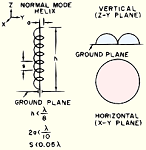 "Does a choice
transmitting antenna always constitute the best receiving antenna?" That question
alone, by author Carl Eller in this issue of Popular Electronics magazine,
piques my interest and gives confidence that this article is the type I have long
said is lacking in the amateur antenna system design realm. Most treatises, it seems,
address only the transmit half of the operation. Just as with the old aviation adage
that with enough power you can make a brick fly, in the non-professional world the
attitude is often that a really crappy base antenna / transmission line / power
amplifier mismatch is fine as long a tuner is capable of bringing the VSWR into
an acceptable range (2:1 or better is preferred). That translates into a lot of
loss from the sky to the equipment. All transmission line loss (attenuation), while
theoretically reducing impedance mismatch issues, adds directly to the noise figure
of a receiver, and therefore to the reduction of minimum discernible signal (MDS)
level. Radiating peak envelope power (PEP) from your antenna so that someone on
the other side of the world can hear you does not do much good if your antenna-to-receiver
loss is so great that the response signal gets buried in the noise... "Does a choice
transmitting antenna always constitute the best receiving antenna?" That question
alone, by author Carl Eller in this issue of Popular Electronics magazine,
piques my interest and gives confidence that this article is the type I have long
said is lacking in the amateur antenna system design realm. Most treatises, it seems,
address only the transmit half of the operation. Just as with the old aviation adage
that with enough power you can make a brick fly, in the non-professional world the
attitude is often that a really crappy base antenna / transmission line / power
amplifier mismatch is fine as long a tuner is capable of bringing the VSWR into
an acceptable range (2:1 or better is preferred). That translates into a lot of
loss from the sky to the equipment. All transmission line loss (attenuation), while
theoretically reducing impedance mismatch issues, adds directly to the noise figure
of a receiver, and therefore to the reduction of minimum discernible signal (MDS)
level. Radiating peak envelope power (PEP) from your antenna so that someone on
the other side of the world can hear you does not do much good if your antenna-to-receiver
loss is so great that the response signal gets buried in the noise...
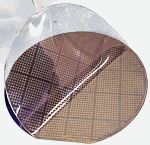 "Over the past few years, material
scientists and electronics engineers have been trying to fabricate new flexible
inorganic materials to create
stretchable and highly performing electronic devices. These devices can be based
on different designs, such as rigid-island active cells with serpentine-shape /
fractal interconnections, neutral mechanical planes or bunked structures. Despite
the significant advancements in the fabrication of stretchable materials, some challenges
have proved difficult to overcome. For instance, materials with wavy or serpentine
interconnect designs commonly have a limited area density and fabricating proposed
stretchable materials is often both difficult and expensive. In addition, the stiffness
of many existing stretchable materials does not match that of human skin tissue,
making them uncomfortable on the skin and thus not ideal for creating wearable technologies..." "Over the past few years, material
scientists and electronics engineers have been trying to fabricate new flexible
inorganic materials to create
stretchable and highly performing electronic devices. These devices can be based
on different designs, such as rigid-island active cells with serpentine-shape /
fractal interconnections, neutral mechanical planes or bunked structures. Despite
the significant advancements in the fabrication of stretchable materials, some challenges
have proved difficult to overcome. For instance, materials with wavy or serpentine
interconnect designs commonly have a limited area density and fabricating proposed
stretchable materials is often both difficult and expensive. In addition, the stiffness
of many existing stretchable materials does not match that of human skin tissue,
making them uncomfortable on the skin and thus not ideal for creating wearable technologies..."
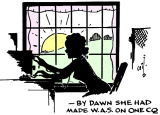 Rod Newkirk (credited with coining the term
"Elmer") was a frequent contributor to the ARRL's QST magazine. In addition
to writing the "How's DX?" column from 1947 to 1978, he occasionally had humorous
short stories related to Hamdom. "Written in
the Stars" and "How Christmas Came to S. McSquegg" are two examples. Here, Ms.
Susie Sopenwater (a sort of "soap and water" portmanteau; i.e., pure and clean)
gets interested in amateur radio after winning the Miss America pageant and finds
plenty of volunteers to help her earn her license and set up a "shack." Susie's
call sign was, WN5P!P. My guess is that the WN5 part is an allusion to wideband
phone (5 kHz) and P!P is for her being a "pip." Of course the P!P could be
a text/graphical reference to her physical qualities (look at it). Let me know if
you have a better (or different) interpretation. You might need to know that a "lid"
in amateur radio is a poor or inconsiderate operator... Rod Newkirk (credited with coining the term
"Elmer") was a frequent contributor to the ARRL's QST magazine. In addition
to writing the "How's DX?" column from 1947 to 1978, he occasionally had humorous
short stories related to Hamdom. "Written in
the Stars" and "How Christmas Came to S. McSquegg" are two examples. Here, Ms.
Susie Sopenwater (a sort of "soap and water" portmanteau; i.e., pure and clean)
gets interested in amateur radio after winning the Miss America pageant and finds
plenty of volunteers to help her earn her license and set up a "shack." Susie's
call sign was, WN5P!P. My guess is that the WN5 part is an allusion to wideband
phone (5 kHz) and P!P is for her being a "pip." Of course the P!P could be
a text/graphical reference to her physical qualities (look at it). Let me know if
you have a better (or different) interpretation. You might need to know that a "lid"
in amateur radio is a poor or inconsiderate operator...
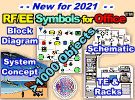 It was a lot of work, but I finally finished
a version of the "RF & Electronics Schematic & Block Diagram Symbols" that
works well with Microsoft Office™ programs Word™, Excel™, and Power Point™.
This is an equivalent of the extensive set of amplifier, mixer, filter, switch,
connector, waveguide, digital, analog, antenna, and other commonly used symbols
for system block diagrams and schematics created for Visio™. Each of the 1,000 or
so symbols was exported individually from Visio in the EMF file format, then imported
into Word on a Drawing Canvas. The EMF format allows an image to be scaled up or
down without becoming pixelated, so all the shapes can be resized in a document
and still look good. The imported symbols can also be UnGrouped into their original
constituent parts for editing. Check them out! It was a lot of work, but I finally finished
a version of the "RF & Electronics Schematic & Block Diagram Symbols" that
works well with Microsoft Office™ programs Word™, Excel™, and Power Point™.
This is an equivalent of the extensive set of amplifier, mixer, filter, switch,
connector, waveguide, digital, analog, antenna, and other commonly used symbols
for system block diagrams and schematics created for Visio™. Each of the 1,000 or
so symbols was exported individually from Visio in the EMF file format, then imported
into Word on a Drawing Canvas. The EMF format allows an image to be scaled up or
down without becoming pixelated, so all the shapes can be resized in a document
and still look good. The imported symbols can also be UnGrouped into their original
constituent parts for editing. Check them out!
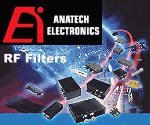 Anatech Electronics (AEI) manufactures and
supplies RF and microwave filters for military and commercial communication
systems, providing standard LP, HP, BP, BS, notch, diplexer, and custom RF filters,
and RF products. Standard RF filter and cable assembly products are published in
our website database for ease of procurement. Custom RF filters designs are used
when a standard cannot be found, or the requirements dictate a custom approach for
your military and commercial communications needs. Sam Benzacar's monthly newsletters
address contemporary wireless subjects. Please visit Anatech today to see how they
can help your project succeed. Anatech Electronics (AEI) manufactures and
supplies RF and microwave filters for military and commercial communication
systems, providing standard LP, HP, BP, BS, notch, diplexer, and custom RF filters,
and RF products. Standard RF filter and cable assembly products are published in
our website database for ease of procurement. Custom RF filters designs are used
when a standard cannot be found, or the requirements dictate a custom approach for
your military and commercial communications needs. Sam Benzacar's monthly newsletters
address contemporary wireless subjects. Please visit Anatech today to see how they
can help your project succeed.
These archive pages are provided in order to make it easier for you to find items
that you remember seeing on the RF Cafe homepage. Of course probably the easiest
way to find anything on the website is to use the "Search
RF Cafe" box at the top of every page.
About RF Cafe.
Homepage Archive Pages
2024:
Jan |
Feb |
Mar |
Apr |
May |
Jun |
Jul |
Aug |
Sep |
Oct |
Nov |
Dec
2023:
Jan |
Feb |
Mar |
Apr |
May |
Jun |
Jul |
Aug |
Sep |
Oct |
Nov |
Dec
2022:
Jan |
Feb |
Mar |
Apr |
May |
Jun |
Jul |
Aug |
Sep |
Oct |
Nov |
Dec
2021:
Jan |
Feb |
Mar |
Apr |
May |
Jun |
Jul |
Aug |
Sep |
Oct |
Nov |
Dec
2020:
Jan |
Feb |
Mar |
Apr |
May |
Jun |
Jul |
Aug |
Sep |
Oct |
Nov |
Dec
2019:
Jan |
Feb |
Mar |
Apr |
May |
Jun |
Jul |
Aug |
Sep |
Oct |
Nov |
Dec
2018:
Jan |
Feb |
Mar |
Apr |
May |
Jun |
Jul |
Aug |
Sep |
Oct |
Nov |
Dec
2017:
Jan | Feb |
Mar |
Apr |
May |
Jun |
Jul |
Aug |
Sep |
Oct |
Nov |
Dec
2016:
Jan |
Feb |
Mar |
Apr |
May |
Jun |
Jul |
Aug |
Sep |
Oct |
Nov |
Dec
2015:
Jan |
Feb |
Mar |
Apr |
May |
Jun |
Jul |
Aug |
Sep |
Oct |
Nov |
Dec
2014:
Jan |
Feb |
Mar |
Apr |
May |
Jun |
Jul |
Aug |
Sep |
Oct |
Nov |
Dec
2013:
Jan |
Feb |
Mar |
Apr |
May |
Jun |
Jul |
Aug |
Sep |
Oct |
Nov |
Dec
2012:
1 |
2 |
3 |
4 |
5 |
6 |
7 |
8 |
9 |
10 |
11 |
12 |
13 (no archives before 2012)
|












 Modelithics and International Manufacturing Services
(IMS)
Modelithics and International Manufacturing Services
(IMS)
















 RF
Cafe's raison d'être is and always has been to provide useful, quality content for
engineers, technicians, engineering managers, students, and hobbyists. Part of that
mission is offering to post applicable /jobs.htm">job openings. HR department employees and/or managers of hiring
companies are welcome to submit opportunities for posting at no charge. 3rd party
recruiters and temp agencies are not included so as to assure a high quality of
listings. Please read through the easy procedure to benefit from RF Cafe's high
quality visitors...
RF
Cafe's raison d'être is and always has been to provide useful, quality content for
engineers, technicians, engineering managers, students, and hobbyists. Part of that
mission is offering to post applicable /jobs.htm">job openings. HR department employees and/or managers of hiring
companies are welcome to submit opportunities for posting at no charge. 3rd party
recruiters and temp agencies are not included so as to assure a high quality of
listings. Please read through the easy procedure to benefit from RF Cafe's high
quality visitors... Copper Mountain Technologies
Copper Mountain Technologies





